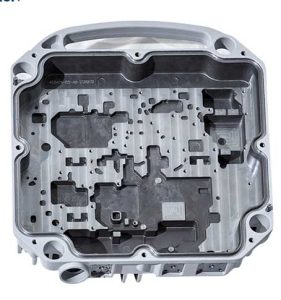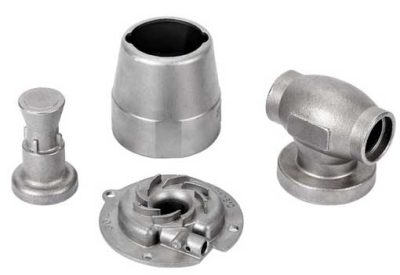Categorie di Prodotto
Tag dei prodotti
messaggi recenti
Alluminio pressofuso, Rame, Parti in acciaio inossidabile
La pressofusione è una parte di pressofusione: Utilizzo della macchina per colata a pressione con lo stampo di colata installato, il metallo come il rame, zinco, alluminio, l'acciaio inossidabile o la lega di alluminio riscaldata allo stato liquido viene versato nello stampo di pressofusione della macchina per pressofusione. Fusione di rame, zinco, parti in alluminio o lega di alluminio di forma e dimensione limitate dallo stampo, tali parti sono spesso denominate parti pressofuse. Le parti pressofuse vengono chiamate diversamente in luoghi diversi: come parti pressofuse, alluminio pressofuso, parti in zinco pressofuso, parti in rame pressofuso, parti pressofuse in lega di alluminio, eccetera.
La pressofusione è una parte di pressofusione: Utilizzo della macchina per colata a pressione con lo stampo di colata installato, il metallo come il rame, zinco, alluminio, l'acciaio inossidabile o la lega di alluminio riscaldata allo stato liquido viene versato nello stampo di pressofusione della macchina per pressofusione. Fusione di rame, zinco, parti in alluminio o lega di alluminio di forma e dimensione limitate dallo stampo, tali parti sono spesso denominate parti pressofuse. Le parti pressofuse vengono chiamate diversamente in luoghi diversi: come parti pressofuse, alluminio pressofuso, parti in zinco pressofuso, parti in rame pressofuso, parti pressofuse in lega di alluminio, eccetera.
Characteristics of Die Castings
Because the metal copper, zinco, aluminum and aluminum alloy have good fluidity and plasticity, and the casting process is cast in a pressure die-casting machine. Perciò, aluminum die castings can be made into various complex shapes, as well as cast products with higher precision and smoothness. Thereby, the machining amount of the casting and the casting allowance of metal copper, zinco, aluminum or aluminum alloy are greatly reduced. It not only saves electricity and metal materials, but also greatly saves labor costs; Rame, zinco, aluminum and aluminum alloys have excellent thermal conductivity, small specific gravity and high machinability; Di conseguenza, die castings are widely used in: Automobile manufacturing, internal combustion engine production, motorcycle manufacturing, motor manufacturing, oil pump manufacturing, transmission machinery manufacturing, precision instruments, landscaping, electric power construction, architectural decoration and other industries.
quality of die castings
The control of the surface temperature of the die-casting mold is very important for the production of high-quality die-casting parts. Uneven or inappropriate mold temperatures can also lead to dimensionally unstable castings. During the production process, the castings are pulled out and deformed, resulting in defects such as thermal pressure, mold sticking, surface depressions, internal shrinkage cavities and thermal bubbles. When the temperature difference of the mold is large, the variables in the production cycle, such as filling time, cooling time and spraying time, have different degrees of influence.
Frequently Asked Questions about Die Castings
The die casting part is not formed and the cavity is not full
causa:
1. The temperature of the die-casting mold is too low;
2. The temperature of the molten metal is low;
3. The pressure of the press is too small;
4. The metal liquid is insufficient; the injection speed is too high;
5, the air can not be discharged.
Adjustment method: 1- 2. Increase the temperature of die-casting mold and molten metal;
3. Replace the high pressure die casting machine;
4. Add enough molten metal to reduce the injection speed and increase the thickness of the feeding port.
Design specifications for die castings
The design of die-casting parts must take into account the wall thickness of the die-casting parts, the casting fillet of the die-casting parts, the draft angle, and the reinforcing ribs;
Casting holes on die castings;
Minimum hole-to-edge distance, oblong holes and slots on die castings, inserts in die castings, machining allowances in die castings, eccetera.
Specification for fillet design of castings
Generalmente, the intersection of each part of the die casting should have rounded corners (except the parting surface), which can make the metal flow smoothly when filling, and the gas can be easily discharged, and can avoid cracks caused by sharp angles. For die castings that require electroplating and finishing, rounded corners provide a uniform coating to prevent paint build-up at sharp corners. The fillet radius R of the die casting should generally not be less than 1mm, and the minimum fillet radius is 0.5mm.
Specification for Design of Inserts in Die Castings
Prima di tutto, the number of inserts on the die casting should not be too much; In secondo luogo, the connection between the insert and the die casting must be firm, e allo stesso tempo, scanalature, protrusions, knurling, eccetera. are required on the insert; Ancora, the insert must avoid sharp corners for ease of placement and to prevent stress concentrations in the casting. If there is serious galvanic corrosion between the casting and the insert, the surface of the insert needs to be protected by plating; Finalmente, heat treatment should be avoided for castings with inserts to avoid volume changes caused by the phase transition of the two metals, loosening the inserts.

Aluminum alloy castings

copper casting

Castings of stainless steel
Design specification for wall thickness of die castings
Thin-walled die castings have higher strength and better densification than thick-walled die castings. In view of this, the following principles should be followed in the design of die castings: On the premise of ensuring sufficient strength and rigidity of the casting, the wall thickness should be reduced as much as possible, and the wall thickness should be kept uniform. Practice has proved that the wall thickness design of die castings is generally 2.5-4mm, and the parts with wall thickness exceeding 6mm should not be produced by die casting process.
The performance of the influence of too thick and too thin walls of die castings on the quality of castings: If the wall of the casting is too thin in the design, the metal welding will not be good, which will directly affect the strength of the casting and cause difficulties in forming; When the wall is too thick or severely uneven, shrinkage and cracks are likely to occur. D'altra parte, with the increase of wall thickness, the defects such as pores and shrinkage inside the casting also increase, which will also reduce the strength of the casting and affect the quality of the casting.
Design specification for machining allowance of die castings
Generalmente, due to the limitations of the die-casting process, some dimensional accuracy, surface roughness or geometrical tolerances of the die-casting parts cannot meet the requirements of the product drawings. Enterprises should first consider the use of finishing methods such as correction, lucidatura, extrusion, and shaping to repair. When finishing cannot completely solve these problems, CNC machining should be performed on some parts of the die casting. It should be noted here that a smaller machining allowance should be considered when performing CNC machining. Allo stesso tempo, try to use the surface that is not affected by the parting surface and active forming as the blank reference surface, so as not to affect the machining accuracy.
Design specification for draft angle of die castings
When designing die castings, the structural slope should be left on the structure; When there is no structural slope, there must be a process slope for demolding where necessary. The direction of the inclination must be consistent with the direction of demolding of the casting.
Die casting machine classification
Materials that can be processed by hot chamber die casting machine: lega di zinco, lega di magnesio, eccetera.;
Cold chamber die casting machine can process materials: lega di zinco, lega di magnesio, Lega di alluminio, copper alloy, eccetera.;
Materials that can be processed by vertical die casting machine: zinco, alluminio, rame, Guida, tin.
The difference between the hot chamber and the cold chamber is whether the injection system of the die casting machine is immersed in the metal solution. Die casting machines can also be divided into horizontal and vertical.
Contattaci
Aspetto la tua email, ti risponderemo entro 12 ore con le preziose informazioni di cui avevi bisogno.
 English
English العربية
العربية 中文(漢字)
中文(漢字) Čeština
Čeština Dansk
Dansk Nederlands
Nederlands Suomi
Suomi Français
Français Deutsch
Deutsch Italiano
Italiano 日本語
日本語 ಕನ್ನಡ
ಕನ್ನಡ 한국어
한국어 Português
Português Русский
Русский Slovenčina
Slovenčina Español
Español Svenska
Svenska Türkçe
Türkçe


